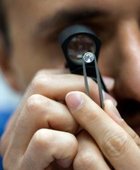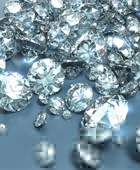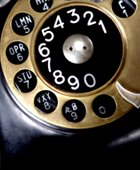Rise of Fancy-Shaped Diamonds
In 2025, one of the most noticeable shifts in bridal jewelry is the growing preference for fancy-shaped diamonds over the traditional round brilliant cut. While round diamonds still remain timeless and popular, many modern couples are opting for more distinctive shapes such as ovals, pears, emeralds, marquise, and cushions. Oval diamonds, in particular, have gained tremendous popularity due to their elongated form, which creates an elegant silhouette and often appears larger than a round diamond of the same carat weight. Emerald and Asscher cuts are also rising in popularity due to their clean, geometric lines and vintage Art Deco appeal. These shapes offer a way to stand out while maintaining the brilliance and elegance expected from engagement rings. Fancy shapes often cost less per carat compared to round diamonds, adding to their appeal for budget-conscious buyers. Couples are increasingly drawn to the uniqueness these shapes offer, allowing them to express individuality in a symbol as personal as an engagement ring.
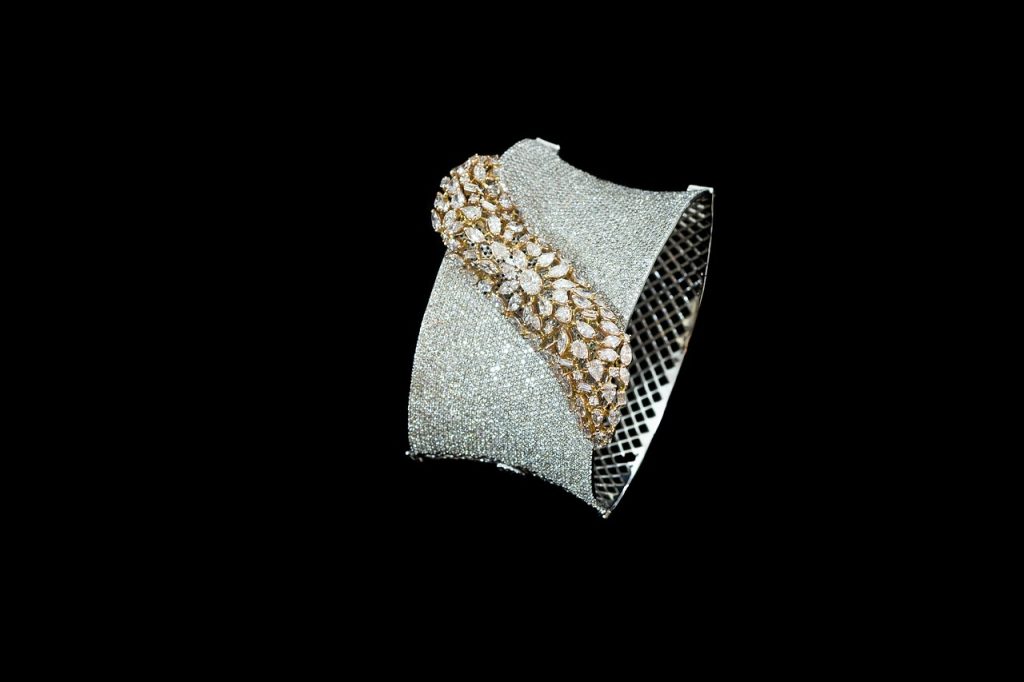
Lab-Grown Diamonds Gaining Ground
Sustainability and affordability have taken center stage in 2025’s bridal diamond market, and lab-grown diamonds are playing a pivotal role in this shift. These diamonds are chemically, physically, and optically identical to their mined counterparts but are created in controlled environments using high-pressure high-temperature (HPHT) or chemical vapor deposition (CVD) methods. One of the biggest advantages of lab-grown diamonds is the cost efficiency—they can be 30–50% less expensive than natural diamonds, allowing couples to purchase larger or higher-quality stones within the same budget. Environmentally conscious consumers are also drawn to the significantly reduced ecological footprint and more transparent supply chains associated with lab-grown options. With prominent jewelry brands now offering extensive lab-grown collections and even high-profile engagements featuring synthetic diamonds, this trend is poised for continued growth. Furthermore, lab-grown diamonds offer the same certification and grading standards as natural stones, including GIA and IGI reports, ensuring quality and value.
Yellow Gold and Mixed Metals Making a Comeback
While platinum and white gold have dominated bridal jewelry settings for the past two decades, 2025 is seeing a marked resurgence in yellow gold engagement rings and wedding bands. This trend can be attributed to both fashion and practicality. Yellow gold provides a warm, vintage feel that pairs especially well with fancy-shaped diamonds like oval, cushion, and pear. It also complements a wide range of skin tones and has a classic, heirloom quality that appeals to couples seeking timelessness in their rings. In addition to yellow gold, mixed metal designs are becoming increasingly desirable. These combinations allow brides and grooms to personalize their rings with contrasting tones—such as white gold shanks with yellow or rose gold heads—creating visual interest and versatility. Mixed metals are also a great way to integrate family heirlooms or match other jewelry pieces. The shift toward yellow and mixed metals indicates a broader movement toward nostalgic, personalized design aesthetics in bridal jewelry.
Three-Stone and Toi et Moi Rings on the Rise
Symbolism is a powerful driver in engagement ring trends for 2025, with three-stone rings and “Toi et Moi” (French for “You and Me”) styles surging in popularity. The three-stone setting, often interpreted as representing a couple’s past, present, and future, offers both aesthetic balance and deep emotional resonance. This classic design is now being updated with contemporary touches such as unique stone combinations, fancy shapes, and asymmetrical arrangements. The Toi et Moi ring style features two stones, often of differing shapes or colors, that sit side by side to symbolize the union of two distinct souls. This design has garnered attention from celebrities and influencers, further propelling its rise. These rings allow for a great deal of customization—couples may choose to combine diamonds with colored gemstones like sapphires or emeralds, or even pair lab-grown and mined diamonds. The emphasis on symbolism and individuality ensures these styles are not just a passing fad but a meaningful evolution in bridal jewelry.
Customization and Personalization as Standard Practice
Personal expression is increasingly prioritized in bridal jewelry, and 2025 solidifies customization as a mainstream expectation rather than a luxury service. More couples are moving away from off-the-shelf rings and instead are choosing to collaborate with jewelers to create bespoke pieces that reflect their story, values, and aesthetic preferences. Popular customization options include engraving special dates or initials, selecting unique gemstone combinations, designing custom settings, and integrating heritage elements such as recycled family jewelry. Advanced technologies like 3D CAD modeling and virtual consultations have made the customization process more accessible and efficient than ever before. Retailers are responding to this demand by offering extensive modular design options and made-to-order collections. The desire for one-of-a-kind rings is being driven by younger generations who value authenticity and storytelling in their purchases. As a result, the bridal market is becoming more diverse in style, symbolism, and substance—blurring the lines between tradition and modernity in exciting ways.
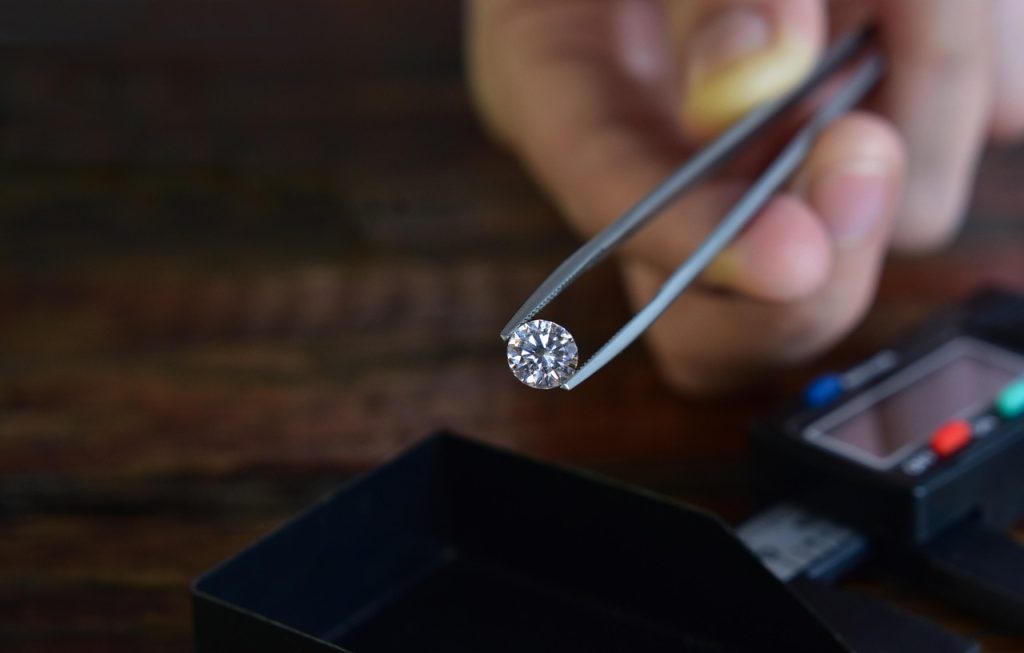
Colored Diamonds and Gemstones Enter the Spotlight
In 2025, colored diamonds and alternative gemstones are making a bold statement in bridal jewelry, adding personality and uniqueness to traditional engagement ring aesthetics. Fancy color diamonds such as champagne, canary yellow, and salt-and-pepper varieties are particularly trending, appealing to those who want a ring that diverges from conventional white diamonds. These stones often evoke a sense of warmth, earthiness, or avant-garde elegance, depending on the hue and setting. Beyond diamonds, sapphires remain a top choice due to their durability and range of colors—from classic royal blue to modern pastels like lavender and teal. Emeralds, rubies, and morganites are also increasingly popular, chosen for their visual impact and symbolic meanings (e.g., emeralds for renewal, rubies for passion). Colored stones often reflect personal taste and can be more cost-effective than high-carat white diamonds, making them ideal for those who want standout engagement rings without sacrificing quality. This trend highlights a growing openness toward nontraditional bridal aesthetics that focus on individuality over conformity.
Vintage and Heirloom Influences
Vintage-inspired and heirloom-style engagement rings are enjoying a renaissance in 2025 as couples seek meaning, history, and craftsmanship in their bridal jewelry. Art Deco styles characterized by geometric symmetry, milgrain detailing, and filigree work are seeing a strong revival. Edwardian and Victorian motifs, including intricate floral patterns and open-work designs, are also gaining popularity among those who appreciate the romance of antique aesthetics. Many modern jewelers are blending vintage design elements with contemporary materials and techniques, allowing buyers to enjoy the best of both worlds: timeless beauty with modern structural integrity. Heirloom rings—whether inherited or repurposed—are also being embraced as sustainable and sentimental choices. Some couples are opting to reset old diamonds or gemstones into new settings, giving family treasures a fresh life while preserving their emotional value. This trend underlines a broader appreciation for craftsmanship, legacy, and the desire to make bridal jewelry not just beautiful, but also storied and emotionally resonant.
Gender-Neutral and Alternative Ring Styles
In alignment with evolving cultural norms around gender and identity, 2025 is seeing a marked increase in demand for gender-neutral and nontraditional engagement and wedding rings. Jewelry designers are moving beyond the conventional expectations of “feminine” and “masculine” ring styles to offer more inclusive options that suit all identities and relationships. Thicker bands with clean lines, mixed textures, black diamonds, and minimalist settings are gaining traction among individuals who prefer understated elegance. Unisex designs with geometric symmetry, alternative materials like titanium or recycled metals, and rings without central stones are also on the rise. These choices often reflect a desire for simplicity, wearability, or a break from cultural expectations. Same-sex couples, nonbinary individuals, and anyone seeking to express love outside of traditional molds are contributing to this shift. As inclusivity becomes a greater focus across the wedding industry, the bridal jewelry market is responding with designs that celebrate diversity and allow for greater personalization beyond gender norms.
Ethical and Transparent Sourcing Becomes Essential
Consumers in 2025 are more informed and conscientious than ever, and this awareness is reshaping how engagement and wedding jewelry is sourced and marketed. Ethical sourcing is no longer a niche consideration—it has become a mainstream priority for many couples. Increasing scrutiny of the diamond supply chain has led to greater demand for stones that are certified conflict-free, traceable to their origins, and extracted under fair labor conditions. Retailers are responding by offering full transparency in sourcing, including blockchain technology to trace a diamond’s journey from mine (or lab) to market. Organizations like the Kimberley Process and third-party certifiers such as SCS Global Services are gaining relevance as trust indicators. In addition to natural diamonds, lab-grown options and recycled materials are being embraced as eco-conscious choices. Many couples now actively inquire about a ring’s environmental and social impact before making a purchase, reinforcing a trend that prioritizes values alongside aesthetics. Transparency and traceability are becoming just as important as cut, color, clarity, and carat.
The Digital Shift: Virtual Consultations and Online Buying
Technology continues to transform the bridal diamond shopping experience in 2025, making it more accessible, customizable, and customer-friendly. Virtual consultations with gemologists, 3D ring renderings, and augmented reality (AR) try-on features have revolutionized the way people shop for engagement rings. Buyers can now explore thousands of diamond options, compare certifications, and even custom-design settings from the comfort of their homes. This shift has expanded access to reputable retailers and has increased confidence in purchasing high-value items online. Furthermore, e-commerce platforms are offering transparent pricing, return policies, and real-time diamond availability, which are major incentives for tech-savvy shoppers. Social media platforms like Instagram and TikTok also play a role, with influencers and brands showcasing trends and educational content to guide consumers. While physical stores still hold appeal for those wanting to see a ring in person, hybrid experiences that combine in-store consultations with digital tools are becoming the norm. In essence, technology is not replacing tradition—it’s enhancing it.


